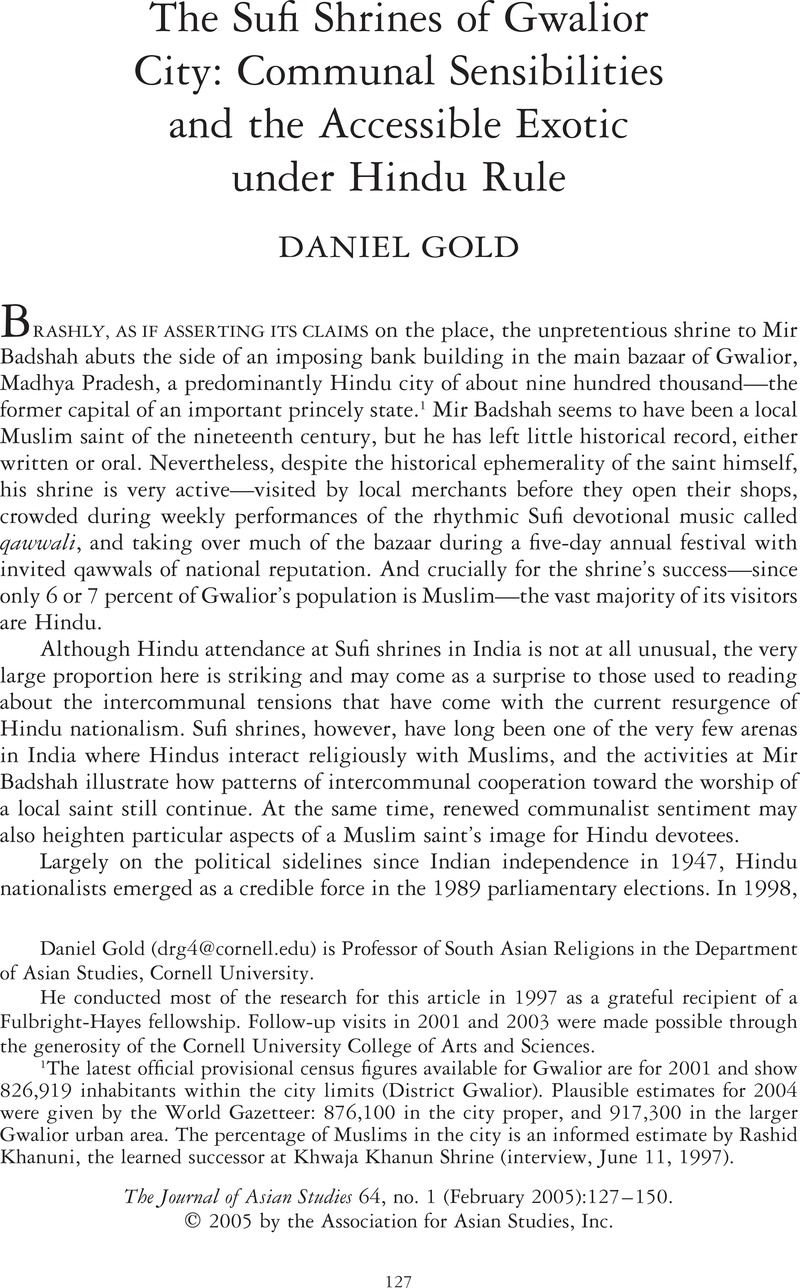Crossref Citations
This article has been cited by the following publications. This list is generated based on data provided by Crossref.
Ghassem‐Fachandi, Parvis
2011.
A Companion to the Anthropology of India.
p.
260.
Parciack, Ronie
2014.
Islamicdeshbhakti.
Contributions to Indian Sociology,
Vol. 48,
Issue. 2,
p.
249.
Ernst, Carl W.
2022.
The Wiley Blackwell Companion to Islamic Spirituality.
p.
165.





